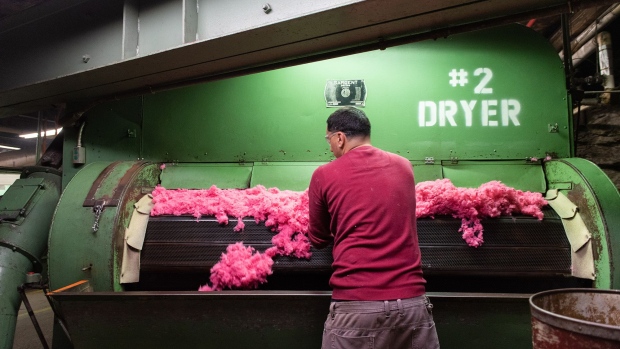May 6, 2022
U.S. posts robust job gains, data offer mixed inflation signs
, Bloomberg News

U.S. hiring advanced at a robust pace in April, yet a smaller labor force may increase pressure on employers to boost wages even more to bring workers back.
That dynamic will likely complicate the Federal Reserve’s fight to tame decades-high inflation, as central bankers work to bring labor demand in line with supply.
Nonfarm payrolls rose 428,000 last month in a broad-based advance, matching the gain in March, a Labor Department report showed Friday. The unemployment rate held at 3.6 per cent and average hourly earnings rose, albeit at a more moderate pace from a month earlier.

The median estimate in a Bloomberg survey of economists called for a 380,000 advance in payrolls and for the unemployment rate to fall to 3.5 per cent.
The S&P 500 opened lower, 10-year Treasury yields rose and the dollar fluctuated.
The solid payrolls advance suggests demand for labor remains strong. Job openings and quits are back at record highs, and businesses are scrambling to hire enough workers to keep up with resilient consumer demand.
The extreme competition for workers has driven up wages at a rapid pace in recent months. Even so, many workers have not seen their incomes keep up with inflation.
Friday’s report showed that average hourly earnings rose 0.3 per cent from March after an upward revision to the prior month. Earnings were up 5.5 per cent from a year earlier. It’s hard to tell if this is the start of a sustained moderation in wage growth or a temporary break in the pace of rampant gains.
The former would be good news for the Fed as it seeks to subdue the fastest inflation in four decades. Chair Jerome Powell said Wednesday that the central bank hopes to temper demand for workers, with the aim to slow wage growth and inflation “without having to slow the economy and have a recession and have unemployment rise materially.”
Policy makers this week raised interest rates by the most since 2000 in an effort to combat rising prices, and Powell said hikes of such size are on the table for upcoming meetings as well.
“The data confirm the Fed’s view that the labor market remains resilient and has strong positive momentum,” Rubeela Farooqi, chief U.S. economist at High Frequency Economics, said in a note. “However, wage pressures are in focus and elevated gains are indicating ongoing competition for still-scarce labor, which is lifting labor costs.”
Participation Drops
- The labor force participation rate -- the share of the population that is working or looking for work -- fell to 62.2 per cent, the lowest in three months, and the rate for workers ages 25-54 edged lower.
- The number of people that went from employed to not in the labor force exceeded 5 million for the first time since the immediate aftermath of the pandemic. The figures, which are volatile on a monthly basis, may still suggest retirements or people quitting without lining up another job or looking for work.

A variety of factors, including care-giving responsibilities for children and the elderly, have kept participation from bouncing back to its pre-pandemic levels. Looking ahead, higher wages paired with surging prices for necessities like food and shelter may bring more Americans back to the labor force.
Job growth was broad-based across industries, led by leisure and hospitality, manufacturing and transportation and warehousing.
For President Joe Biden, the jobs recovery remains a bright spot in an otherwise challenging economic picture heading into the midterms later this year. Inflation is at its highest in generations, and the country is facing bigger bills for everything from groceries to rent to gasoline. Nearly 60 per cent of Americans disapprove of the president’s handling of the economy.
What Bloomberg Economics Says...
“For those who believe a recession is imminent, the negative employment print in the household portion of the survey seems to corroborate that. In contrast, the ‘glass-half-full’ view would say the odds for the Fed to engineer a soft landing have just increased. We lean toward the latter reading.”
-- Anna Wong, Yelena Shulyatyeva and Andrew Husby, economists
Friday’s report, which offered a mixed picture about the labor market, is comprised two surveys -- one of businesses, and the other of households. While the business survey, or what economists refer to as the establishment survey, showed strong payroll growth, the other indicated a pullback in employment.

